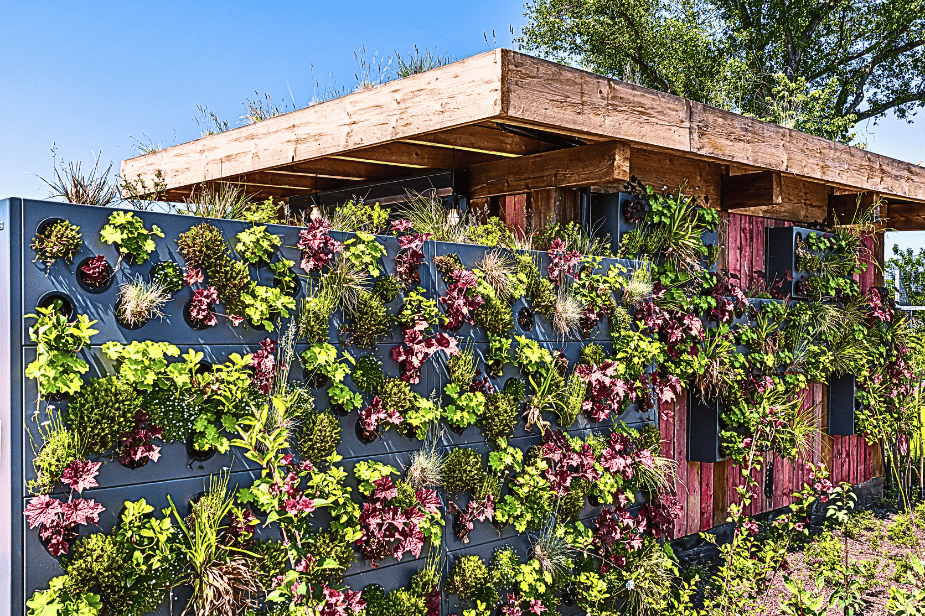When you think about gardening, expansive fields or wide backyard spaces come to mind. On the other hand, vertical gardening techniques to maximize space are a game-changer for urban dwellers or those simply looking to make the most of a limited area.
Namely, drawing on my 25+ years of experience in agriculture and gardening across diverse climates, vertical gardening offers both beauty and efficiency. Here’s a comprehensive guide to techniques that can transform even the smallest space into a lush green haven.
Why Vertical Gardening Techniques to Maximize Space?
Benefits of Vertical Gardening Techniques to Maximize Space
Limited space should never limit your green ambitions. As a result, vertical gardening optimizes your available area by growing upwards rather than outwards. Therefore, this approach is especially beneficial for urban dwellers who may only have balconies or small patios to work with.
For instance, check out some valuable tips here Gardeners’ World . In fact, even those with the most limited outdoor areas can cultivate lush, vibrant gardens using vertical space, transforming balconies or patios into thriving green sanctuaries.
Additionally, vertical setups often make gardening tasks, like pruning and harvesting, more accessible and less physically demanding, which can be a significant advantage for beginners or those with mobility concerns.
Additionally, you can check out more interesting facts in this article published by Virginia Tech. Not only does this save ground space, but it also creates visually stunning displays and makes plant maintenance more manageable.
Through my work with modular vertical growing systems at Agrovertical and, lately, through experimentation with carbon fiber structures designed to accommodate bulbous and leafy vegetables in stackable setups, I’ve learned firsthand how these methods can thrive in urban and rural settings.
Vertical gardening contributes to better plant air circulation, reducing the risk of diseases and pests that can thrive in overcrowded horizontal setups. Moreover, vertical gardening has become a symbol of sustainable living.
Utilizing every inch of space efficiently minimizes waste and yields. This is especially vital in urban areas with limited access to green spaces. Even for those in rural settings, these techniques can help create layered gardens that are both productive and visually appealing.
Techniques to Maximize Space
How Vertical Gardening Enhances Sustainability
Trellises and Lattices
Trellises and lattices are staples of vertical gardening.
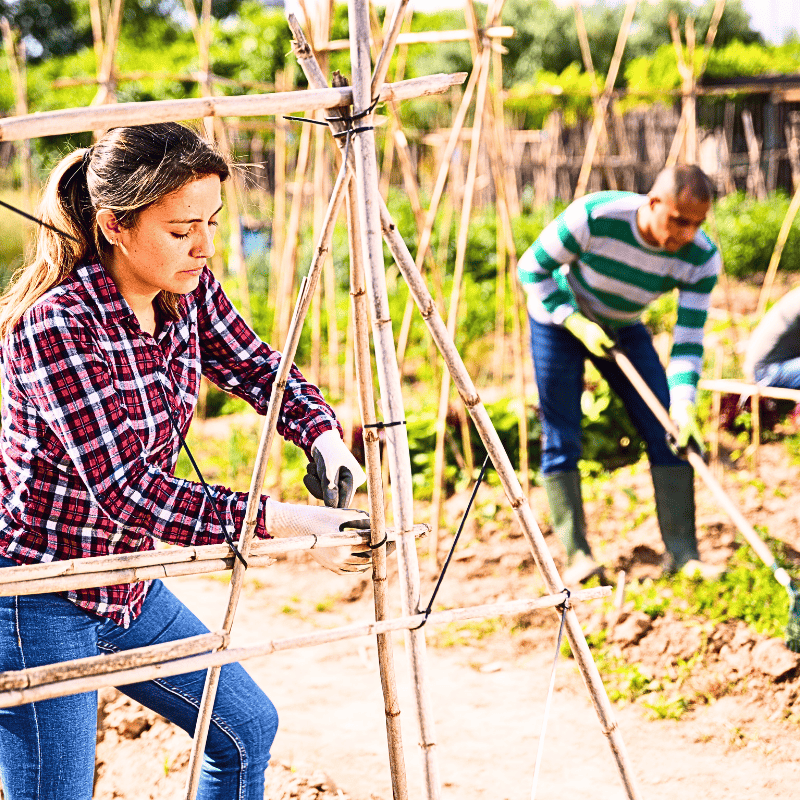
Building Trellises: Essential Vertical Gardening Techniques
They support climbing plants like beans, peas, and cucumbers. These structures can transform blank walls or fences into living tapestries, perfect for blending function with aesthetics. Combining trellises with flowering vines like morning glories can add a layer of beauty.
Pocket Planters
Pocket planters are excellent for herbs, flowers, and small vegetables.
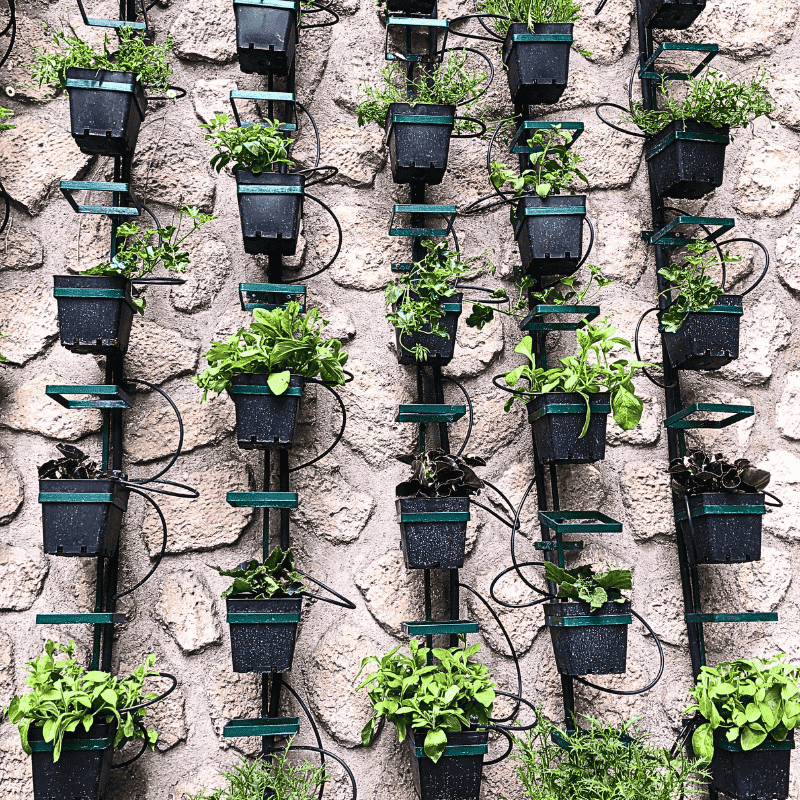
Pocket Planters: A Vertical Gardening Solution for Small Spaces
For instance, while pocket planters are excellent for herbs and flowers, they require careful attention to irrigation and drainage to prevent waterlogging. Furthermore, ensure that each pocket has adequate drainage holes, and consider using a lightweight, well-draining soil mix.
For optimal results, check the moisture levels regularly and position the planters in a location with suitable light conditions for your chosen plants. They attach to walls or hang freely, allowing you to create vertical rows of greenery.
As such, this method works particularly well in tight urban spaces or balconies. Using pocket planters, I’ve grown various herbs like basil, thyme, and parsley.
Wall-Mounted Planters
Wall-mounted planters are a versatile option. They come in various materials, from ceramic to fabric, and can be arranged in creative patterns. I’ve used them extensively in urban agriculture projects where space efficiency is paramount.
For beginners, starting with succulents or low-maintenance plants in these planters can make the process less intimidating.
Hanging Baskets
Hanging baskets bring a touch of charm to any space.
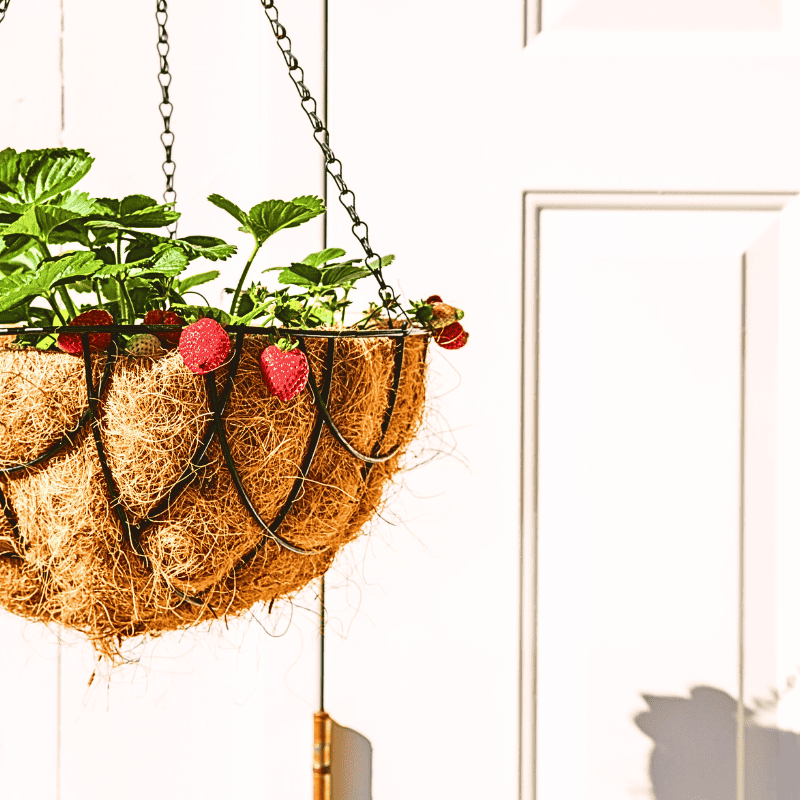
Hanging Baskets: A Vertical Gardening Technique for Small Spaces
For example, flowers like petunias or strawberries thrive in these baskets, which allow you to utilize overhead space effectively.
Vertical Planter Boxes
These freestanding structures offer multiple levels of planting boxes. They’re great for growing a mix of plants and can be placed anywhere with good sunlight access.
In particular, vertical planter boxes are effective for crops with different growth habits, such as lettuce on the top tier and root vegetables like radishes in the lower boxes.
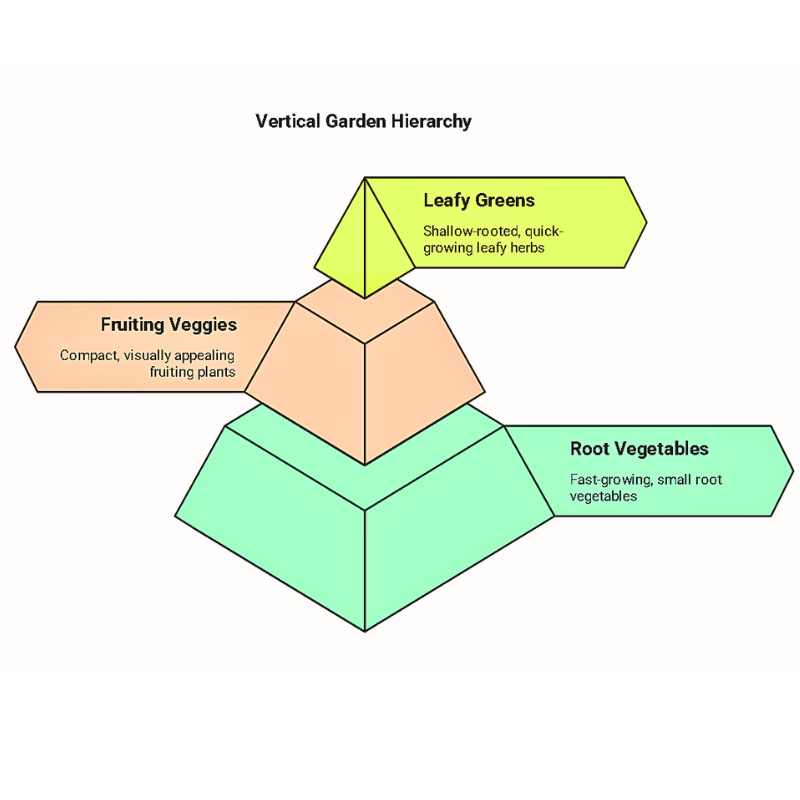
Green Walls
Green or living walls are a stunning addition to any space.
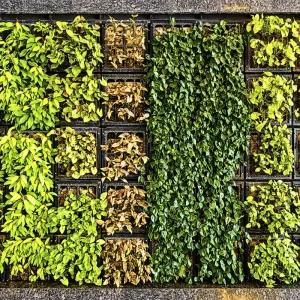
In particular, transforming a dull office lobby into a vibrant green wall with a mix of ferns, ivy, and flowering plants can create a significant positive change.
As a result, spaces are often transformed into serene retreats, with improved air quality and better morale for everyone using the space.
In addition, these walls typically use modular panels attached to the structure, including irrigation systems, for easier maintenance.
I’ve seen these installations in multiple commercial projects and can attest to their positive impact and contribution to regulating indoor temperatures.
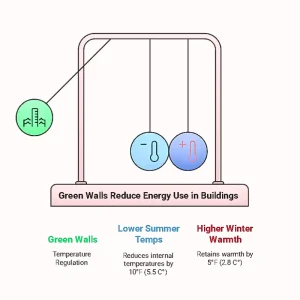
Palette Gardens
Repurposing old wooden palettes into vertical gardens is both sustainable and creative. These gardens are ideal for growing herbs or small flowering plants and can be a fun DIY project.
Accordingly, adding a coat of non-toxic paint to the palettes can further enhance their aesthetic appeal.
Tiered Stands
Tiered stands are excellent for showcasing potted plants at varying heights. They’re handy for patios or small yards, providing ample room for different plant varieties.
Consequently, they also allow easy access for watering and pruning, making maintenance a breeze.
Climbing Plants
Integrating Vertical Gardening Techniques in Urban Settings
Climbing plants like ivy, roses, or wisteria naturally lead to vertical growth. Generally, they can be trained on walls, arbors, or pergolas to create lush, green environments. Also, using companion planting with climbing plants can also help deter pests naturally.
Gutter Gardens
Upcycling old gutters into vertical planters is an innovative way to grow shallow-rooted plants like lettuce or spinach.

To create your gutter garden, clean and paint the gutters with a non-toxic coating for durability and aesthetics. Next, drill drainage holes along the bottom of each gutter to prevent waterlogging.
Mount the gutters securely to a wall or frame, staggering them to allow adequate sunlight for each layer. Fill the gutters with a lightweight, nutrient-rich soil mix, and plant your seeds or seedlings.
Finally, regularly water the garden and check for drainage to ensure healthy growth. This simple setup is functional and adds a unique touch to your vertical gardening space.
By staggering gutter rows, you can create a cascading effect that enhances functionality and design.
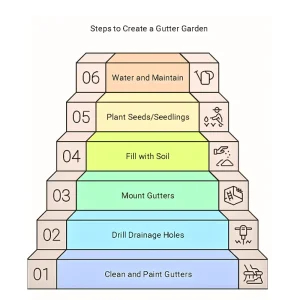
Ladder Gardens
Somebody can repurpose old ladders as multi-tiered plant stands. Moreover, you can lean them against a wall and add pots to each rung for a rustic yet functional display.
I’ve seen ladder gardens thrive with cascading flowers or trailing herbs, adding a touch of whimsy to outdoor spaces.
Window Boxes
Window boxes are a classic choice for adding greenery to your home. They’re ideal for flowers or herbs and can brighten any window frame.
Combining window boxes with drip irrigation systems can make them even more efficient.
Tips for Successful Vertical Gardening
Integrating Vertical Gardening with Smart Technology
For vertical gardening techniques to maximize space, choose varieties that naturally grow upwards or don’t require deep roots.
Sunlight and Irrigation: Ensure your vertical setup receives adequate sunlight and has a convenient watering system. Additionally, using smart irrigation tools can help automate this process.
Use Quality Soil: High-quality soil ensures your plants get the nutrients they need to thrive.
Incorporate Technology: In example, IoT farming solutions like automated irrigation systems can make vertical gardening more efficient and less labor-intensive.
Regular Maintenance: To maintain optimal health, prune plants regularly and monitor for pests.
Enhance your vertical garden’s yield with creative layout designs.
My Personal Touch
Over the years, I’ve experimented with some of these techniques. Vertical gardening is not just a practical solution—it’s a passion. It allows us to reconnect with nature, no matter where we live.
As a result, it is rewarding to share these techniques with others, observing their understanding of the potential within their spaces grow.
Conclusion
Vertical gardening techniques to maximize space offer a sustainable and creative way to grow various plants, even in small areas. Regardless of your experience level, these techniques can transform your space into a green oasis.
By all means, start small, experiment, and watch your garden grow upwards. The possibilities are endless, from creating vibrant herb gardens on your balcony to implementing green walls that redefine your living space.
Therefore, if you’re ready to take your gardening to the next level, start with one of these techniques today. Let’s grow greener together!


